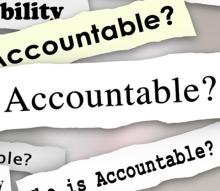This is the fourteenth in a series of profiles about recent NIH postdocs who have found an array of jobs, from academia to industry to communications and beyond, in the U.S. and abroad. What do they do now, and how did they get there? What challenges did they face, and what advice do they have? Read on to find out.
Name: Michael Abram
Current position: Research scientist, Gilead Sciences, Inc.
Location: Foster City,CA
Time in current position: 11 months
Postdoc: Fidelity of HIV-1 replication with Stephen Hughes at NCI-Frederick
Day-to-day: I work in clinical virology. It’s about 50 percent scientific research, filling in knowledge gaps about HIV drugs that are soon to be FDA-approved or have recently been approved. My research focus is on understanding mechanisms of action and resistance to these drugs, and how they work in combination as antivirals. The remaining half of my job involves nonclinical regulatory work, such as contributing to new drug applications to the FDA and providing clinical virology support on Phase III studies for drugs that will soon be approved. This latter part of my job involves assessing resistance mutations that may be arising in human subjects and determining the effectiveness of these drugs compared to the current standard of care.
It’s always a balancing act. Spending time on one thing usually takes away from another. But while there never seems to be enough time, and there is frequently a sense of urgency to some responsibilities, I am really enjoying my job. No day is the same. I have brought new insights and fresh perspective, which is one of the qualities they were looking for. For the most part I’m allowed creative freedom in my position when around me there is a lot of repetition.
My story: During my graduate studies I admittedly did not give a lot of thought toward becoming an actual professor, and trusted instead that my experience and education would sort everything out when the time was right. I was extremely devoted to and deeply involved in research, and later came to realize that with minimal interest in teaching large classes, a career in academia may not be the right fit.
A frustrating search: In my third year of my postdoc I began to consider careers away from the bench, including scientific/management consulting, medical science liaising, medical strategy, competitive intelligence and international affairs. However, for the most part, I was either not qualified given my level or type of experience or would not be able to maintain a good work/life balance. The non-academic scientific research jobs I found also appeared to be very rigid. The employers had a square hole and they wanted a square peg to fill it. My impression of the jobs I was seeing was that they needed someone to, for example, purify proteins, and that would be your primary role. I wanted to take my years of experience and tackle difficult problems with more creativity and diversity.
Resources: I spent a lot of time preparing myself for the job hunt and educating myself about different types of jobs. I read books and AAAS articles on the topic. Peter Fiske’s book Putting Your Science to Work really does a great job pumping up your confidence. Some of the websites I found most useful were indeed.com, biospace.com, biocareers.com and naturejobs.com. Biospace was ideal in listing all pharma/biotech companies and profiles by geography. I also catalogued research institutes where I could theoretically continue to work as a research scientist with minimal academic responsibilities. I scoured other people’s LinkedIn profiles to get ideas on how to creatively describe and quantify what I did and how to lay out my CV in a non-“generic scientist” way.
Stay in control of your time: Trying to stay on top of the job search process in addition to being productive in the lab as a postdoc and maintaining a personal life was a difficult balance. It was so easy to avoid career development and exploration and go work in the lab. Time slipped by so fast. I had to set weekly goals for accomplishing certain job search objectives, and kept organized with monthly resets and look-backs on what I had accomplished and where I wanted to be. I didn’t start talking to people until my third year, and I’m still kicking myself for not being prepared earlier.
A little luck after a lot of work: Gilead Sciences was the first place I officially applied to. They interviewed me and tenured an offer. I admittedly was very lucky. However, I had put in a lot of work to get to that point. My experience and pedigree had positioned me very well.
A whirlwind application: I had worked with a person who ended up at Gilead, and I’d invited her to a conference. Nine months later, she emailed me asking if I was still looking for a job. Then it was a whirlwind. The hiring manager emailed me the next day—I think it was a Thursday—saying he was going to be in D.C. on Tuesday and could we meet. I was traveling and still finalizing my CV, so that was a real scramble. It went well, and a couple of days later they said how about next week we fly you out toSan Francisco? Well, that was step 10 on my list and I was still at step 5! I managed to coordinate a time that allowed me a few weeks to prepare.
I practiced by researching the interviewers and coming up with a list of specific questions for each one; thinking of good questions they hadn’t heard before, preparing answers for many of the typical difficult questions, and making plans for how to divert my answers into areas where I had confidence or could tell them something that wasn’t in my CV. For my seminar, I got advice from people to start with an outline of everything I’d done and then focus on two stories about my research.
My interview experience was long and exhausting. It lasted from 8 a.m. to 8 p.m., and consisted of 10 different 30-minute interviews with people all over the company, a 1-hour presentation, and lunch and dinner discussions. The toughest question came from the head of the department. It was a problem-based “trick” question. Of course I ended up overanalyzing it when the answer was right in front of me. That was a bit embarrassing. I kept going over and over it on the flight back to the East coast.
A couple of days after that, they extended an offer. My start date was one month later.
Making the choice: To be honest, money was right up there. I had an idea of what it would take to get me to move toCalifornia, and the offer was a little higher than that. I liked the diversity of the job. The research was just a lateral move from what I’d been doing at the NIH. I could grow into areas I hadn’t experienced. It seemed like a good atmosphere, a good team, and the company has good core values.
Trade-offs: I’m far away from family. And there’s no more snow! I’m still carrying a J1 visa ball and chain (I’m fromCanada), and I’m trying to get a waiver to start the green card process. My wife moved out 6 months after me because she was finishing up her Masters. That was very hard. Fortunately, she was able to transfer within her company. When we discussed the move, I said, why don’t we try it for a few years? It’s an adventure. And it continues to be to this day!
Michael can be contacted through the OITE alumni database.




